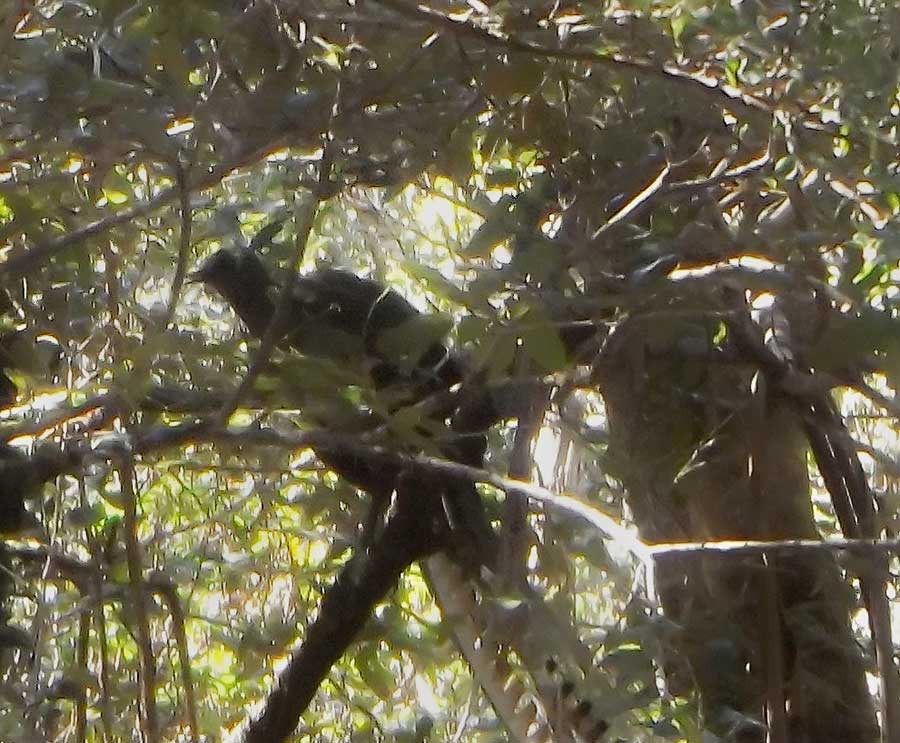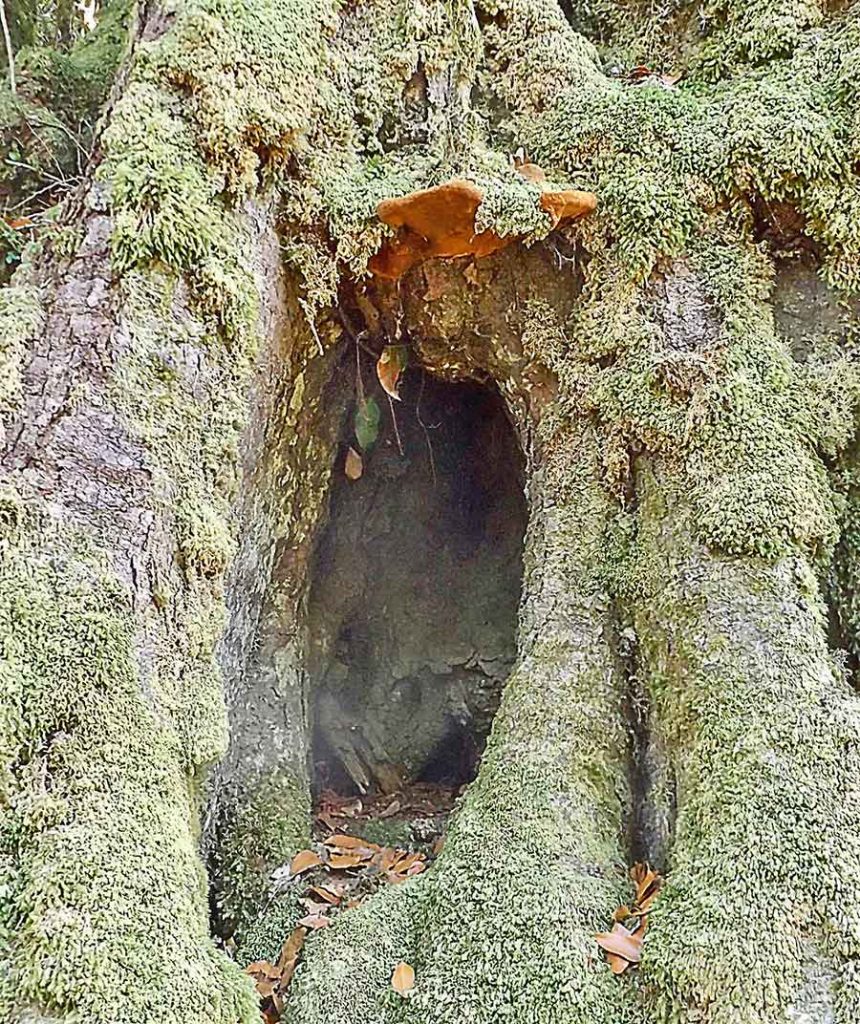Of course the New England National Park holds more natural treasures than green moss and bearding lichen, entrancing as they are.
Like the wonderfully pleasing design made by the coiled new shoots of the many tree ferns, ready to unwind and reach skywards.

Or the dense and tall banks of delicate Coral Fern, Gleichenia dicarpa.

While looking up into the Antarctic Beech forests was impressive, listening in there was too. Almost mid-day, and yet so many birdsongs…

Peering into the trees, I saw the singer: one lyrebird, loudly and constantly being all birds. I had a brief chance to take this shot before he flew down to the forest floor.

There he seemed to be digging, but it was hard to see at what, and hard to see him! On several other walks, I heard a lyrebird, and sat listening for 20 minutes at one spot, but failed to see the singer.
The only time I have ever seen a lyrebird display was in another part of this Park, decades ago.

And while looking down, I was treated to a closer view of an Antarctic Beech (Nothofagus moorei), as the pinkish/coppery colour of the new leaves of this young one caught my eye. It was the only one I saw.

The foot of this very old Beech was mossed and crinkled and caverned, looking every bit as ancient as it must be.

Yet within those gnarly buttresses were mysterious details, like this fungi-roofed cave, home to who knows what creature…

Yes, Sue, it’s heartening to think of a world without us! Our imagination saves us from despair.
I love the fungi cave especially, And like you, wonder who inhabits it. Fairyland!
Sue
I look hard Derek; which is why I trip over…
The things you find !!!